The slide rule is nearly 400 years old. At its origin is the rich Scottish nobleman Sir John Napier (1550-1617). In his work “Mirifici logarithmorum canonis descriptio", he described a simple way of multiplying, dividing and squaring large numbers and finding their square root. By taking the logarithm of numbers, their multiplication or division was reduced to an addition or subtraction.
The logarithm, as originally invented by Napier, was not calculated in base 10. Only after a meeting of Napier with Henry Briggs (1561-1630), the latter worked out a table for base 10 logarithms.
Edmund Gunter (1581-1626) used calipers to add (multiply) or subtract (divide) on a single logarithmic scale (a "Gunter").
The Oxfordshire mathematician and vicar William Oughtred (1575-1660) then described the principle of moving two logarithmic scales in relation to each other. He is also at the origin of a circular version of the slide rule (i.e. the calculating disk).
In 1850, the Frenchman Amédée Mannheim (1831-1906) added a handy accessory to the slide rule: the cursor. Depending on their field of use (navigation, technical calculations...), slide rules were also provided with extra scales (e.g. goniometric scales, ...)
In addition to the rules and discs, there are also cylindrical slide rules. A cylinder makes it possible to arrange the scales in a spiral or as parallel subscales. In this way, very long scales are possible, allowing calculations to be made with much greater accuracy.
Manufacturer, origin and year of production unknown.
The logarithmic scale "Num" was used to multiply or divide numbers with the aid of calipers. Some of the other scales on the rule were typical for the use in navigation (M*L, S*R, ...).
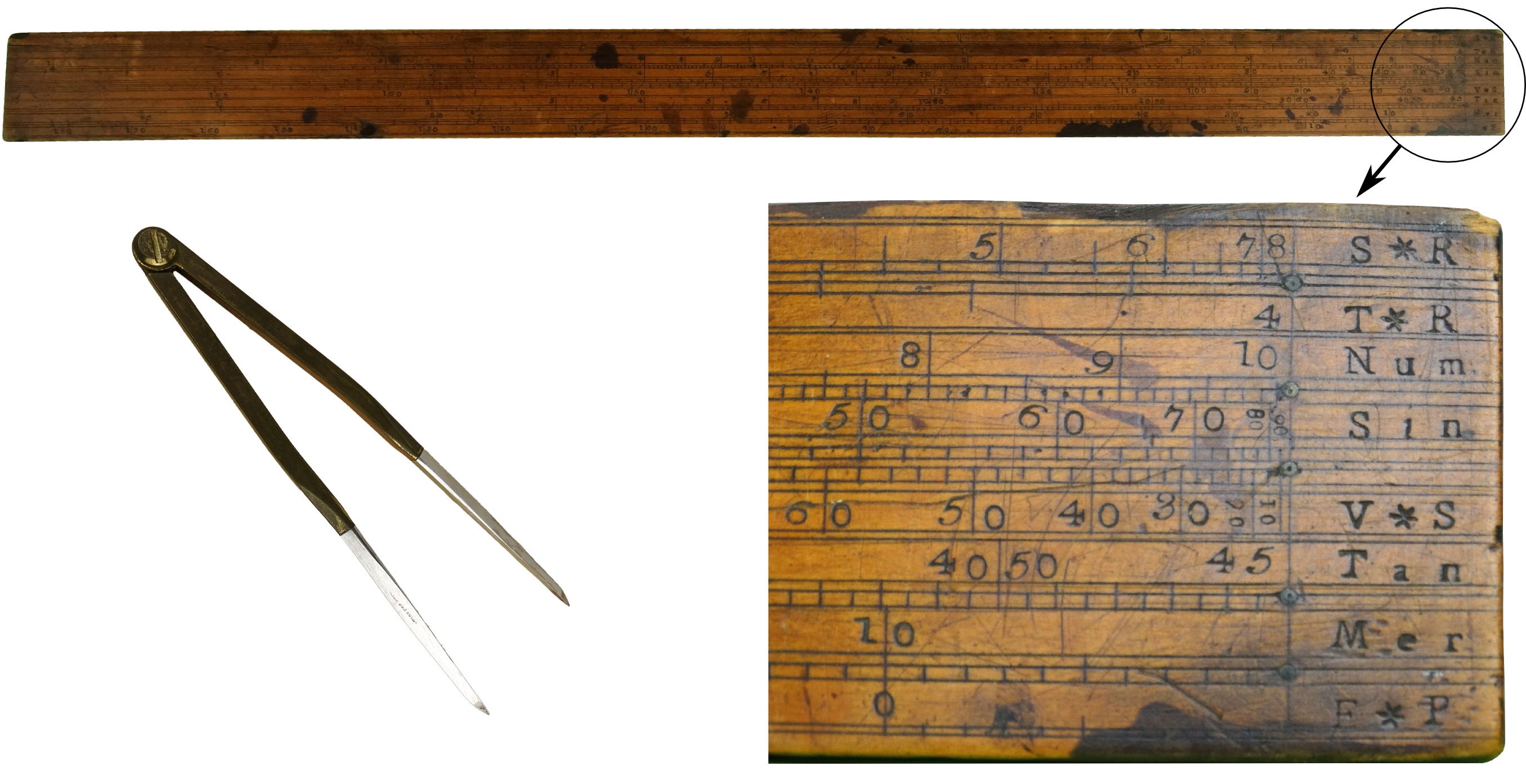
Collection: E. Smet (item 368 and 382)
REISS Rietz-Spezial 3201 (Bad Liebenwerda, GDR), ca. 1970
This is the classic implementation of a slide rule, with a central slider (or tongue). This can move in relation to the upper and lower scales. These upper and lower scales form a single part - the body of the rule.
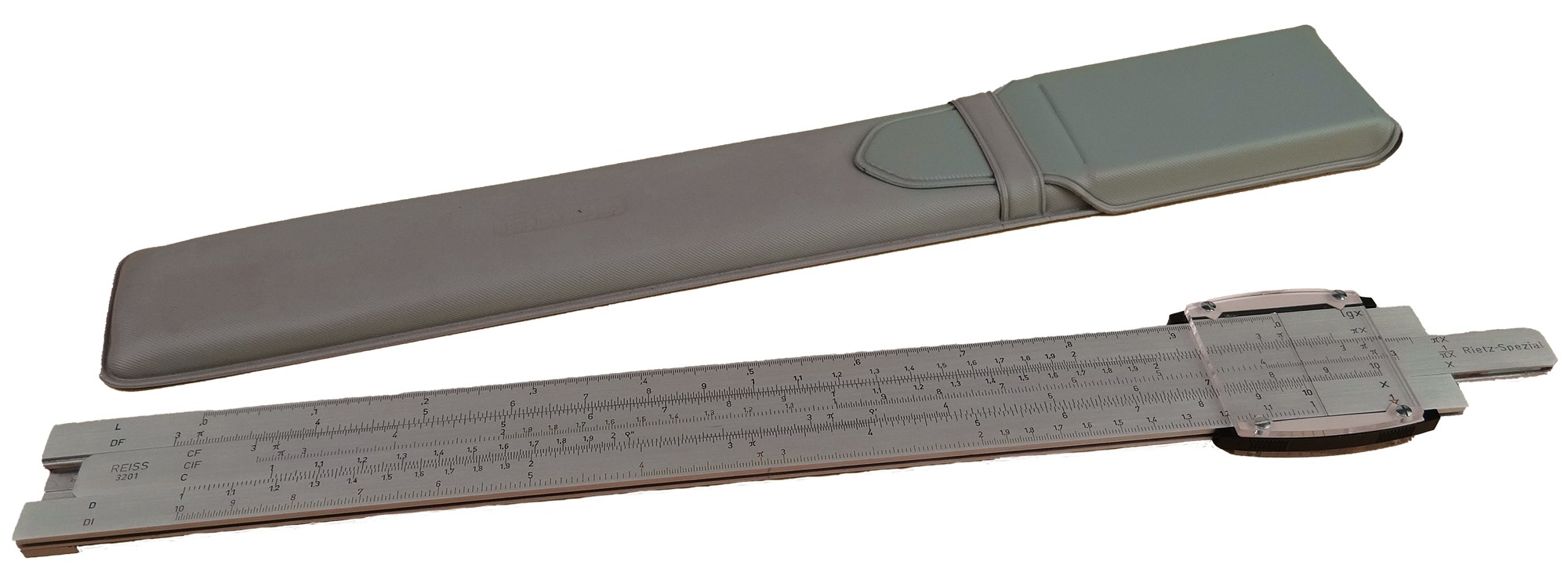
Collection: E. Smet (item 101)
ARISTO MULTIRIETZ 0929 (Hamburg, West-Germany), ? 1959
This slide rule has an extensive collection of scales on the front (K, DF, CF, ClF, Cl, C, D, L) and on the back (P, A, B, T, ST, S, C, D, Dl). It also comes with a conversion table. The manual is for similar models by Aristo.
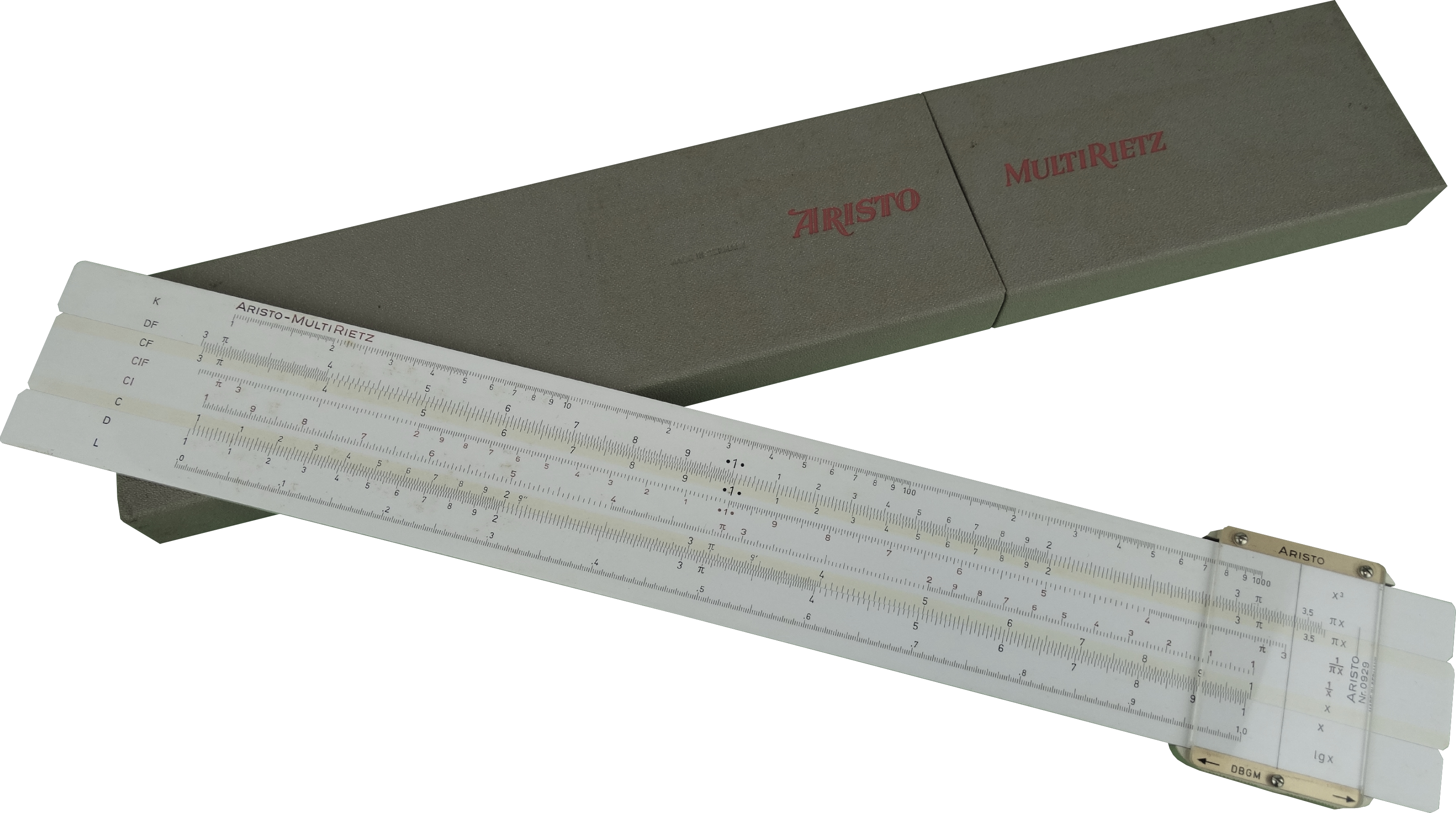
Collection: E. Smet (item 299)
Model 1R by K. EMIL TRÖGER (Mylau/Vogtland, GDR), ca. 1960
The central disc with scales can be rotated relative to the outer disc using a knob on the back. The cursor helps you to read accurately.
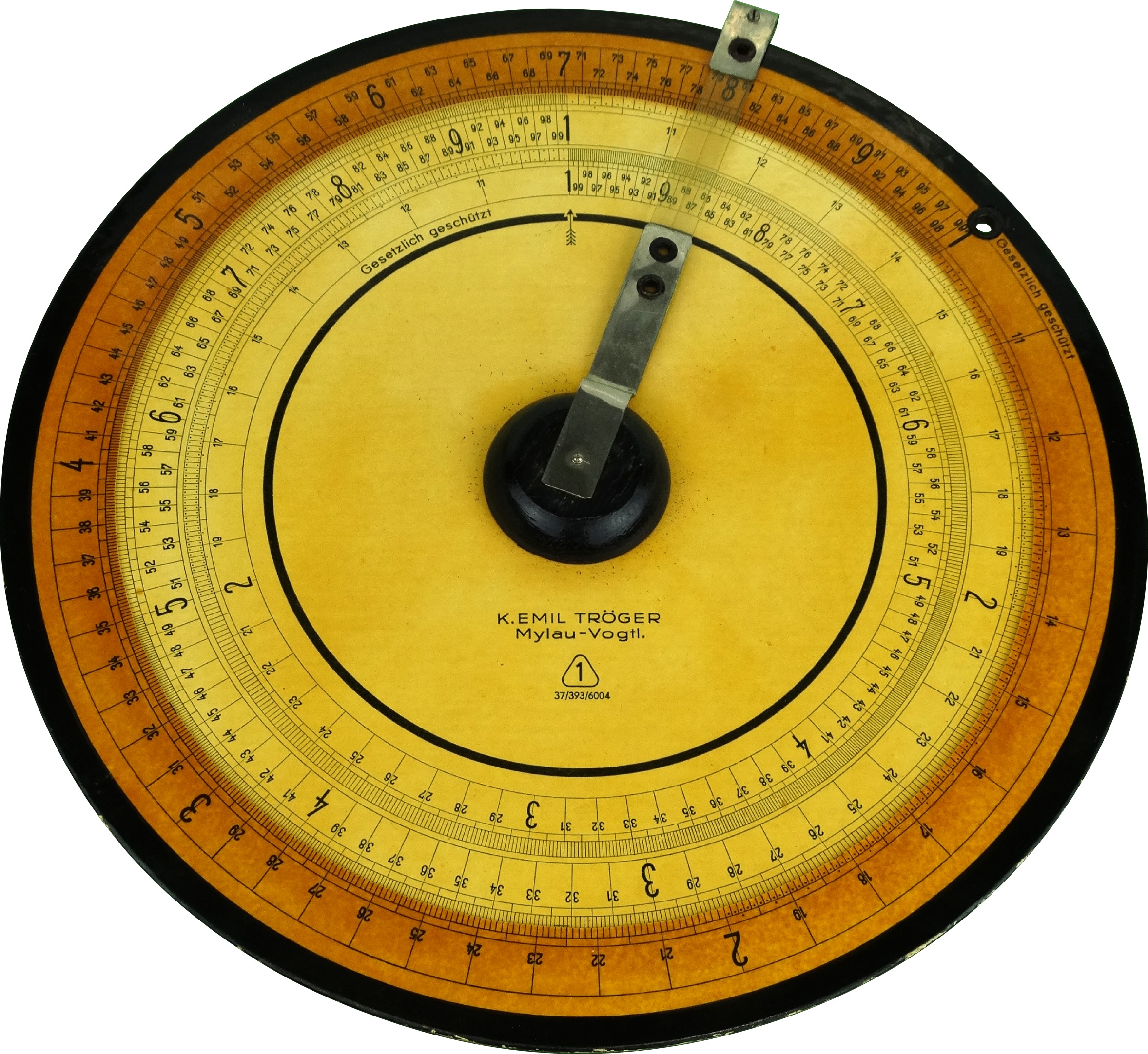
Collection: E. Smet (item 77)
Fuller Calculator Model 1, W.F. Stanley & Co., London (England), 1921
The spiral main scale makes 50 revolutions, equivalent to a classic slide rule of 12.6m.
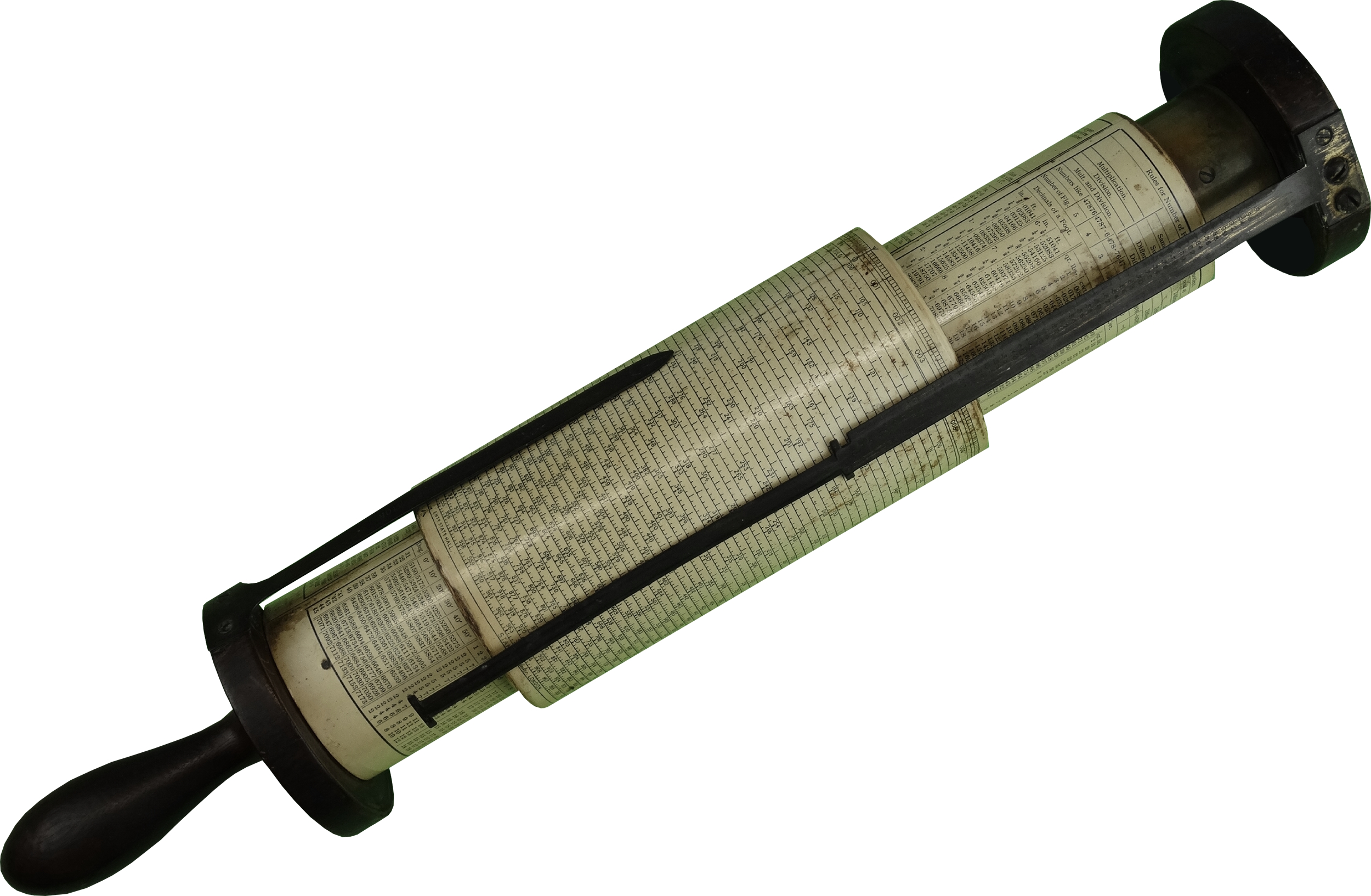
Collection: E. Smet (item 377)
LOGA Calculator by Daemen-Schmid (Switzerland), 1900 … 1935
This calculating cylinder is the equivalent of a slide rule about 15 meters long!
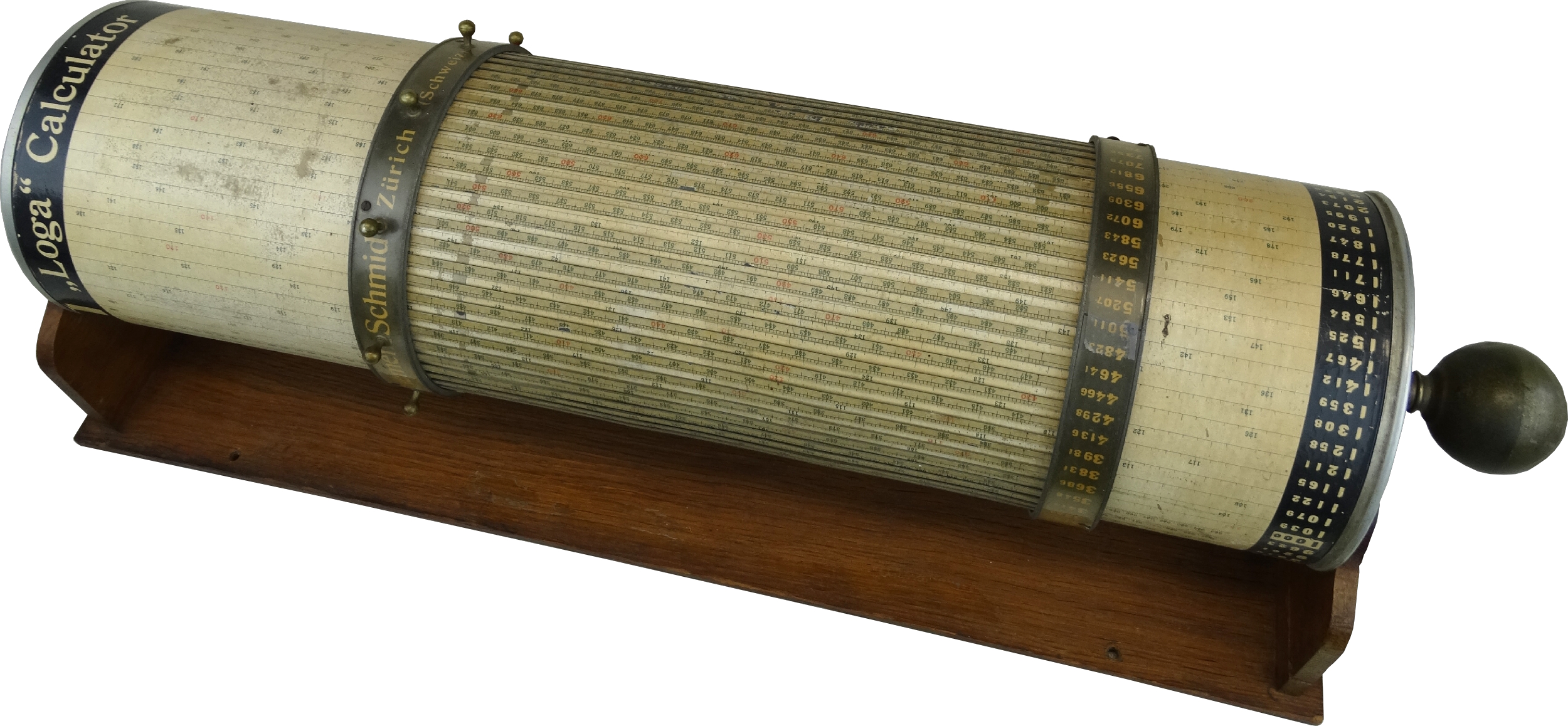
Collection: E. Smet (item 313)
Otis King Calculator Model K (London, England), 1921 … 1971
When folded, the holder of this compact calculator is 167 mm long, but the scales are exactly 10 times as long.
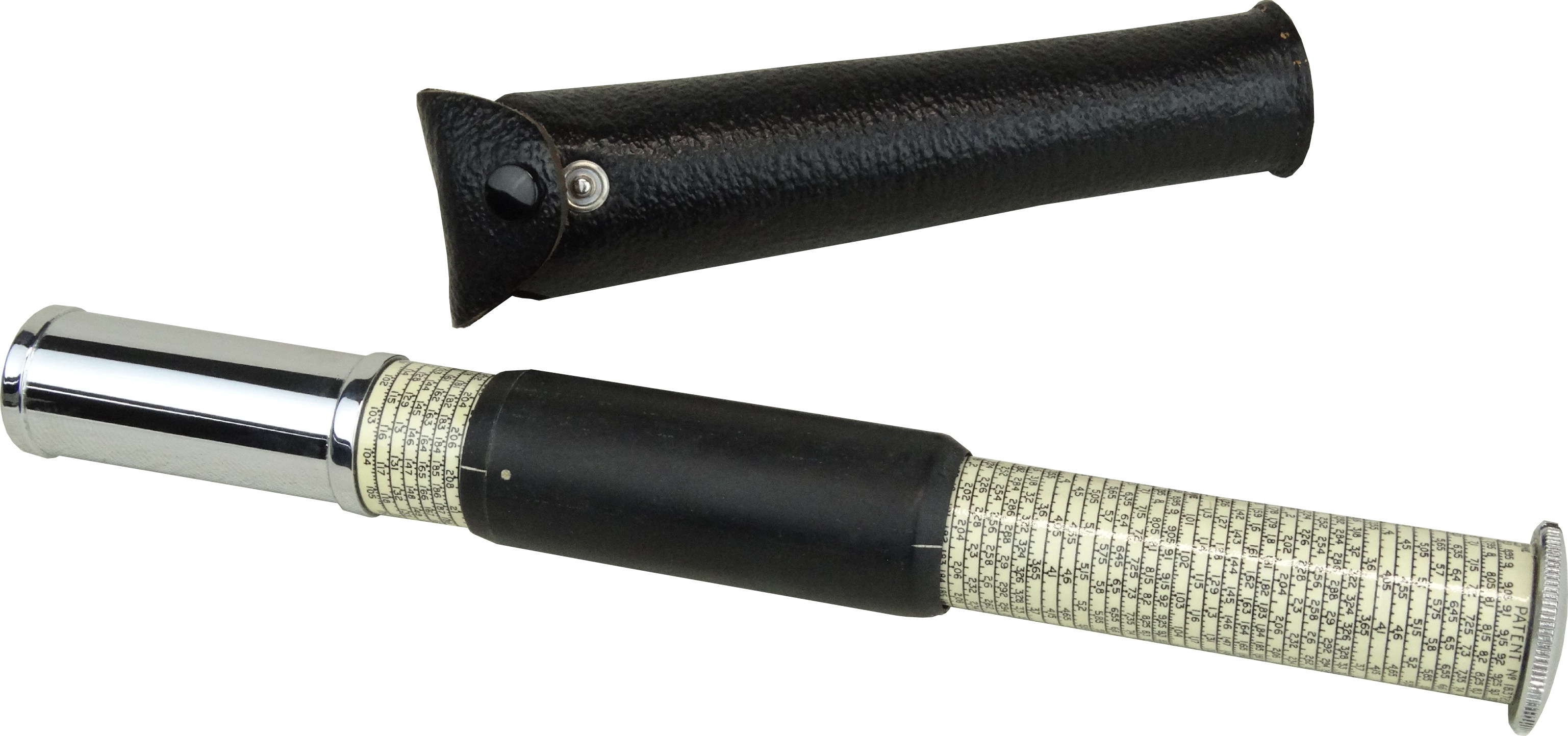
Collection: E. Smet (item 131)
NESTLER Rietz Nr. 0235 (Lahr in Baden, West-Germany), November 1971
Wooden slide rule with plastic surfaces. On the back are tables of physical constants and conversion factors.
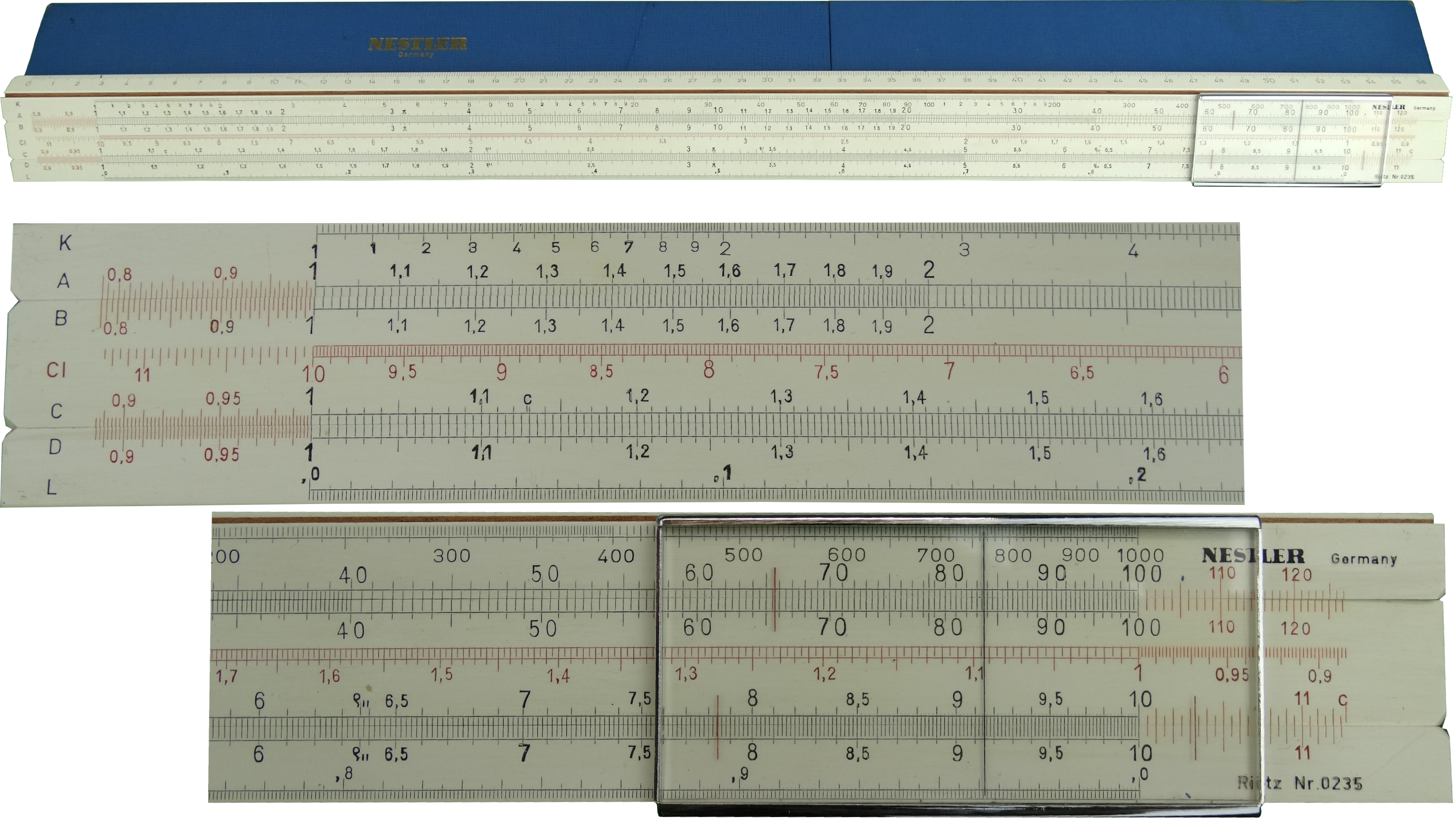
Collection: E. Smet (item 266)
“Temelj” Građevno Produzeće (Karlovac, Yugoslavia), year of production unknown
Wooden slide rule with plastified paper scales: K, A, B, Cl, C, D and P. The back of this slide rule is also printed with physical constants and conversion factors.

Collection: E. Smet (item 99)
SUN HEMMI (Japan), November 1968
Bamboo, metal and "snow white" celluloid slide rule. Hemmi (1895) is the oldest Japanese manufacturer of slide rules and was granted a patent in 1912 for the use of laminated bamboo.
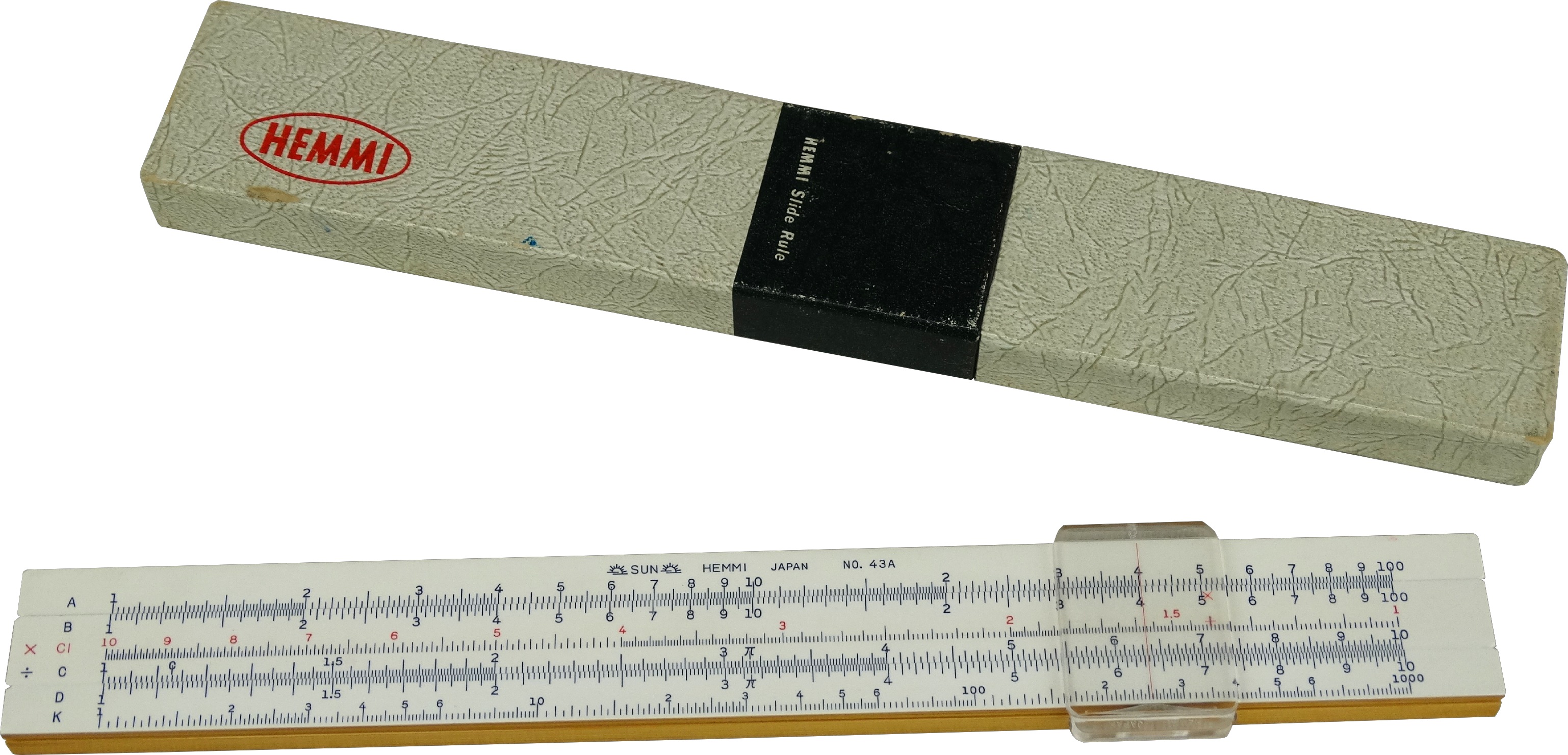
Collection: E. Smet (item 220)
Nestler Nr. 11 R (Lahr in Baden, West-Germany), ca.1950
Very compact plastic slide rule.
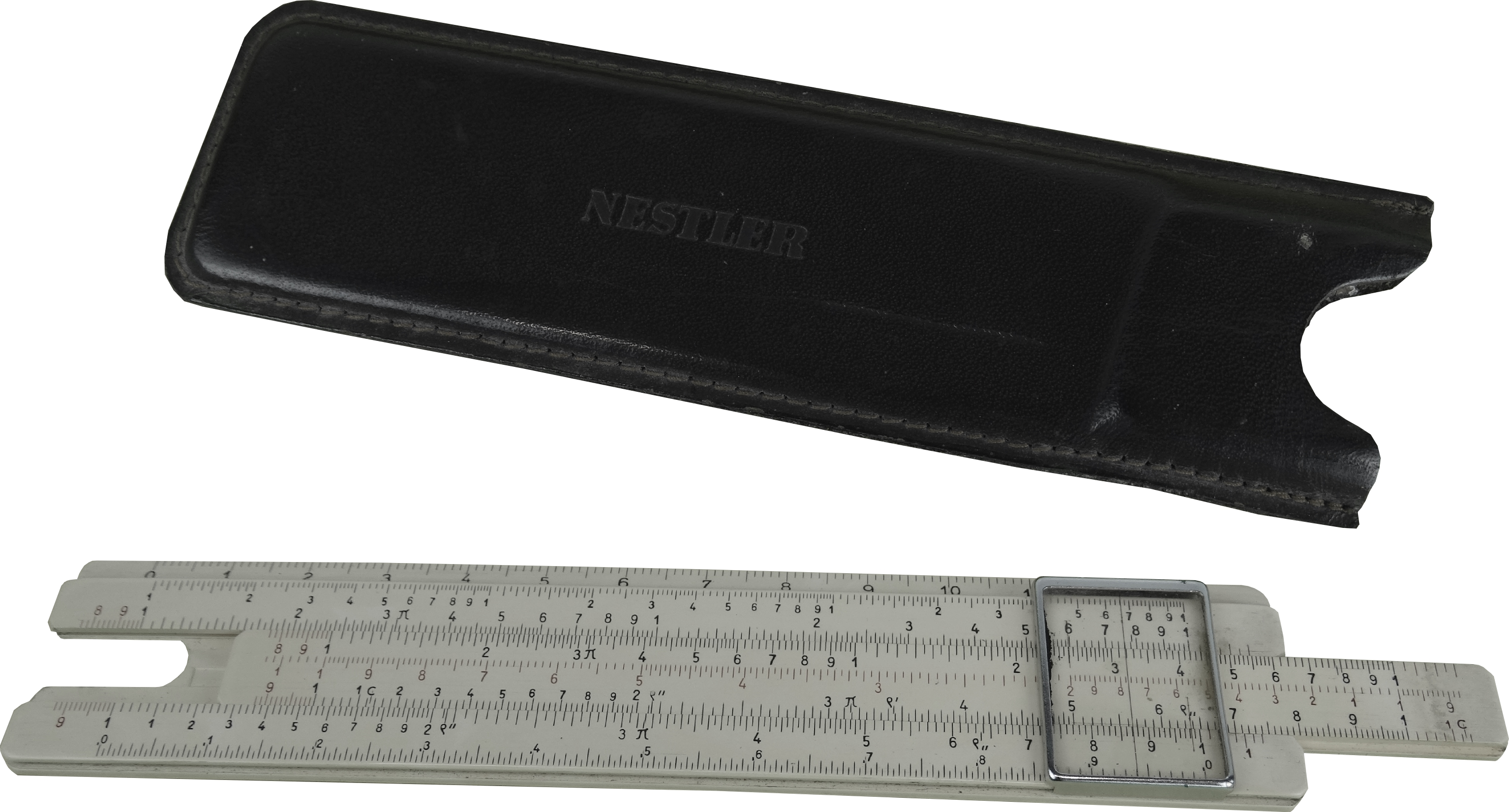
Collection: E. Smet (item 298)